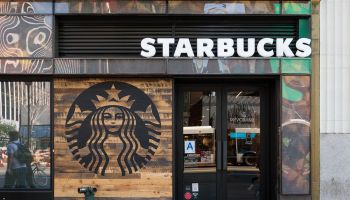Four Things Banks with Limited Advertising Budgets Can Learn from the Starbucks Marketing Strategy
Starbucks uses new media to leverage a global brand in local markets
- |
- Written by Banking Exchange staff

Starbucks is a very complicated company to analyze in terms of marketing if one looks at it from the view of traditional advertising spend. The company has limited global advertising budgets, and rarely spends money on broadcast media. However, Starbucks uses new media to leverage a global brand in local markets with unprecedented success and certainly has a well thought out global marketing strategy.
Widely Known for Worker Satisfaction
One of the most crucial ways that Starbucks markets itself globally is how it treats its employees. This approach has generated positive press not only in the United States but has developed this reputation throughout the world. Starbucks is committed to having “partners”, the name they call the employees, be in the top of their employee class in every country in terms of benefits.
For instance, in the United States where it is rare for a company to offer health benefits for part time employees, Starbucks is widely known for providing healthcare and stock purchase plans for workers that work as little as twenty hours a week. Additionally, they provide undergraduate college reimbursement on a national level through the Arizona State University online program without any requirement to stay at the company after completion of the degree.
In China, Starbucks is known as having some of the top health benefits of any employer. While they study what it means in every culture to provide a top of line work experience for their partners, workers’ contentment is indistinguishable across the globe. The global marketing strategy behind worker contentment is to make sure that over Facebook, Twitter and any social media outlet, the stories and surveys of worker satisfaction make its way to chat rooms and local articles throughout the world.
Effective Social Media Strategy
Secondly, Starbucks leverages social media in encouraging customers to share positive personal experiences in stores for its global marketing strategy. They communicate directly with customers and publish feedback.
They also use their ubiquitous presence of its stores (23,000 stores globally) as a marketing tool. If one lands in any major airport in Europe, for instance, the global traveller now can find a Starbucks within the airport if not one or two blocks away. Rather than buying billboards in airports, they open a store and do not necessarily judge that store on its profit because it is also considered part of a global marketing campaign by its mere existence when a global customer steps off the plane. If a bank is regional, perhaps it can look at a bank or ATM location within the airport based on its marketing value as much as its performance relative to other locations.
Match Customer Values with Company Values
Starbucks has also made sure that loyal coffee drinkers also are aware of their commitment to the environmental issues, coupled with a perceived commitment to finding the best coffee beans in remote places around the world. The focus on this positioning is because of the commonality they have found between most coffee lovers throughout the world in terms of environmental concerns, and the mystique of looking the world over for the best blend for coffee drinkers. Clearly when Starbucks markets its global brand, they first look for commonalities so that there is a consistent message and consistent environment whenever someone walks into a Starbucks.
However, the success in Starbucks’ international expansion has also come from its relentless dedication to regional marketing local preference as part of a global marketing strategy. The Starbucks App, for instance, will collect data on the local customer, and present specific options to the regional customer.
The digital marketing strategy is to make the Starbucks closest to the customers’ homes feel like their Starbucks. Starbucks’ advertising budgets actually are made up of regional print and electronic coupons that target local customer preferences and touch points. The national rewards program for customers takes into account how local cultures would best receive the perks of loyalty so it varies from country to country.
Same Overall Experience with a Touch of Regional Preferences
Starbucks also markets specialty drinks within local markets that have been developed just for that region of the world. For instance, Indonesia has a peanut butter based drink that is not found in any other region. In China where culture has historically been tea drinkers rather than coffee drinkers, the menu has a more extensive list of tea options and they even have coffee drinks that are flavored with green tea.
At least ten different countries have at least one drink specifically made for that region of the world, and it is one of the products they lead with in terms of print and online marketing to defend against bad press that they receive for supposedly pushing out local businesses.
The company not only focuses locally on the marketing of regional products, but they also maintain global commonality in the store environment while making local adjustments. For instance, in Europe where there is a more sophisticated coffee drinker and there is great sensitivity to local businesses, Starbucks has made adjustments such as having avant-garde architecture in Starbucks in Amsterdam, and even have an area in some of the Amsterdam locations for public poetry reading.
In Europe more so than in America, Starbucks feels the need to constantly reinvent the customer experience while maintaining consistency for its global customers. In Japan, they seek to portray a family friendly environment that is consistent with Japanese culture and their local marketing reflects this.
Tagged under Bank Performance, The Economy, Financial Research, Feature, Management, Financial Trends, Performance, Customers, Community Banking, Feature3, Commercial,